Preface
Today, I went to Longhua Temple with my family leader and friends. Although I have been in Shanghai for a long time and often passed by Longhua Station on the subway, I had never set foot there. This time, I took the opportunity to join the small group, see what it was all about, and document the experience.
![Longhua Pagoda, also known as the [Pagoda of Gratitude], was originally built in the 10th year of Chiwu during the Wu Kingdom of the Three Kingdoms period (247 AD).](https://gdhblog.com/blog-imgs/20250209/longhua-temple-02.jpg)
Longhua Pagoda, also known as the [Pagoda of Gratitude], was originally built in the 10th year of Chiwu during the Wu Kingdom of the Three Kingdoms period (247 AD).
Why Go
It all started when my family leader sent me a WeChat message one day, saying that my uncle and aunt were facing Tai Sui conflicts this year and asked me to get them a red string or other protective charms.
Remembering Some Things
Since childhood, my family has followed various worship rituals during festivals or the New Year, such as praying to the Earth God, the Sun, and ancestral deities. I always did as I was told—following instructions step by step. Whenever I asked about the purpose, the response was always: “Just pray quickly, it’s good for you. Don’t forget to say auspicious words—bless the family with health, bless your studies…” Even now, I still don’t fully understand what exactly we were worshipping or what practical effects it had. So when I was asked to pray to Tai Sui, I couldn’t help but feel a bit puzzled.
Photos
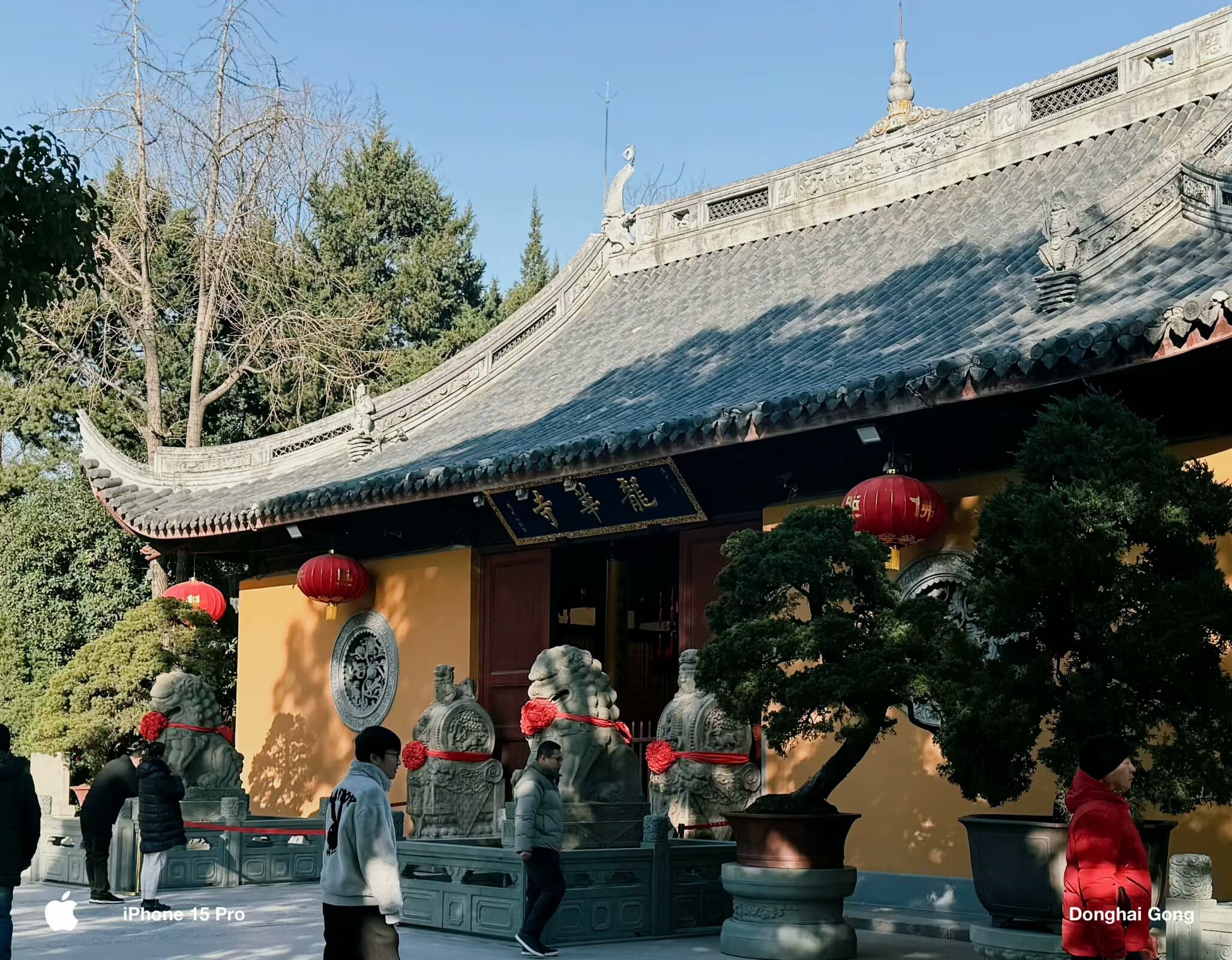
At the temple entrance, I bought a bundle of incense for 20 yuan (online payment was available, and bringing your own incense was also an option). After entering the temple, I followed the crowd, holding the incense with both hands and walking around the Longhua Pagoda three times. Based on my observations, some worshippers stopped to pray at the four cardinal directions (east, south, west, and north), while others only paused at the south and north sides.
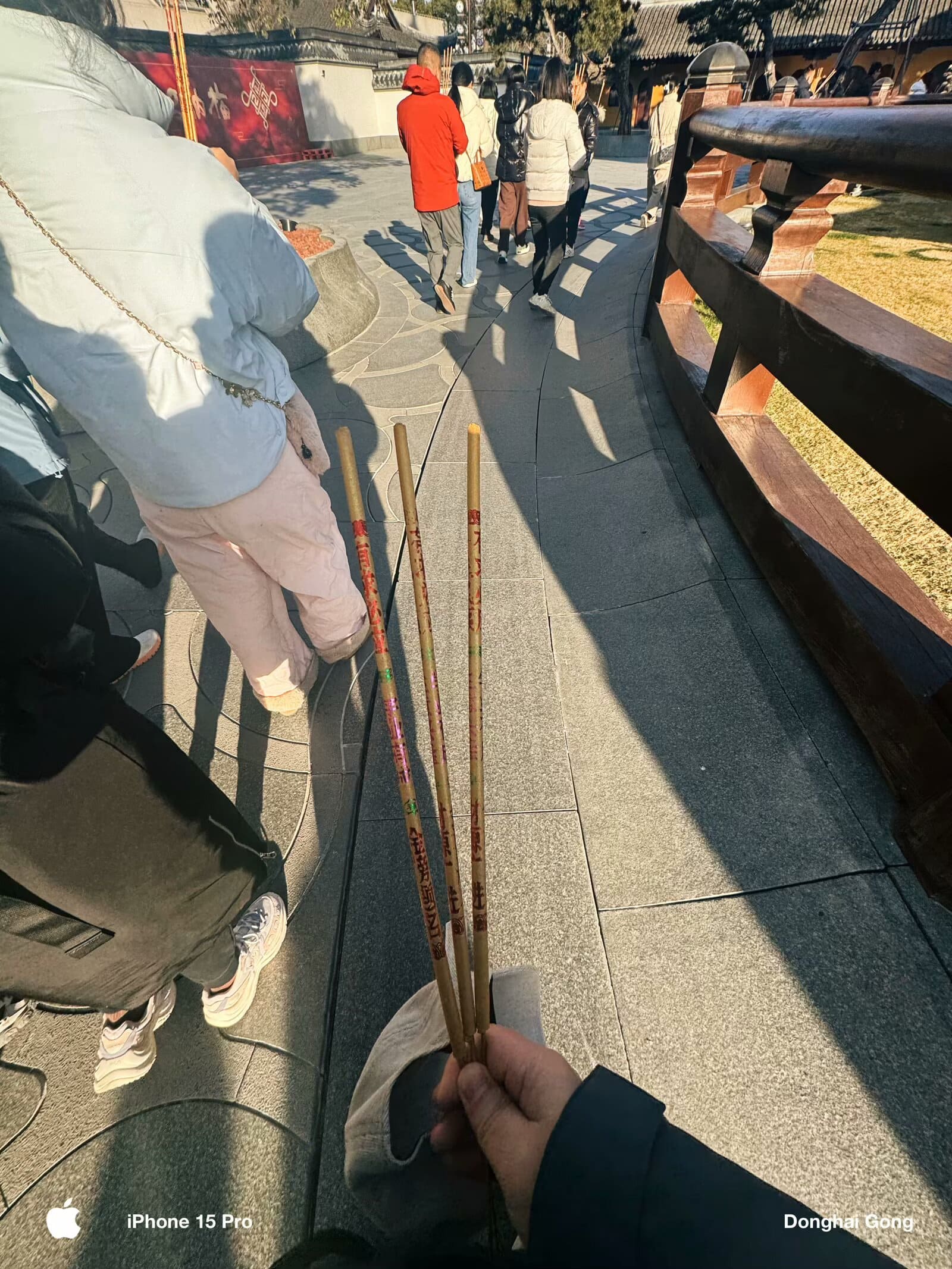
Walking around Longhua Pagoda three times with incense
After completing the three rounds around the pagoda, I continued holding the incense and proceeded to the Maitreya Hall for prayers (again, based on observations, people prayed at four different directions). Once the prayers were finished, I placed the incense into the incense burner.
Info
Be careful when placing the incense into the burner to avoid burns. The burner is quite deep and tall, so if you can’t reach, just toss the incense in. After all, once inside, temple staff will use a shovel to gather and burn the incense together—so the result is the same.
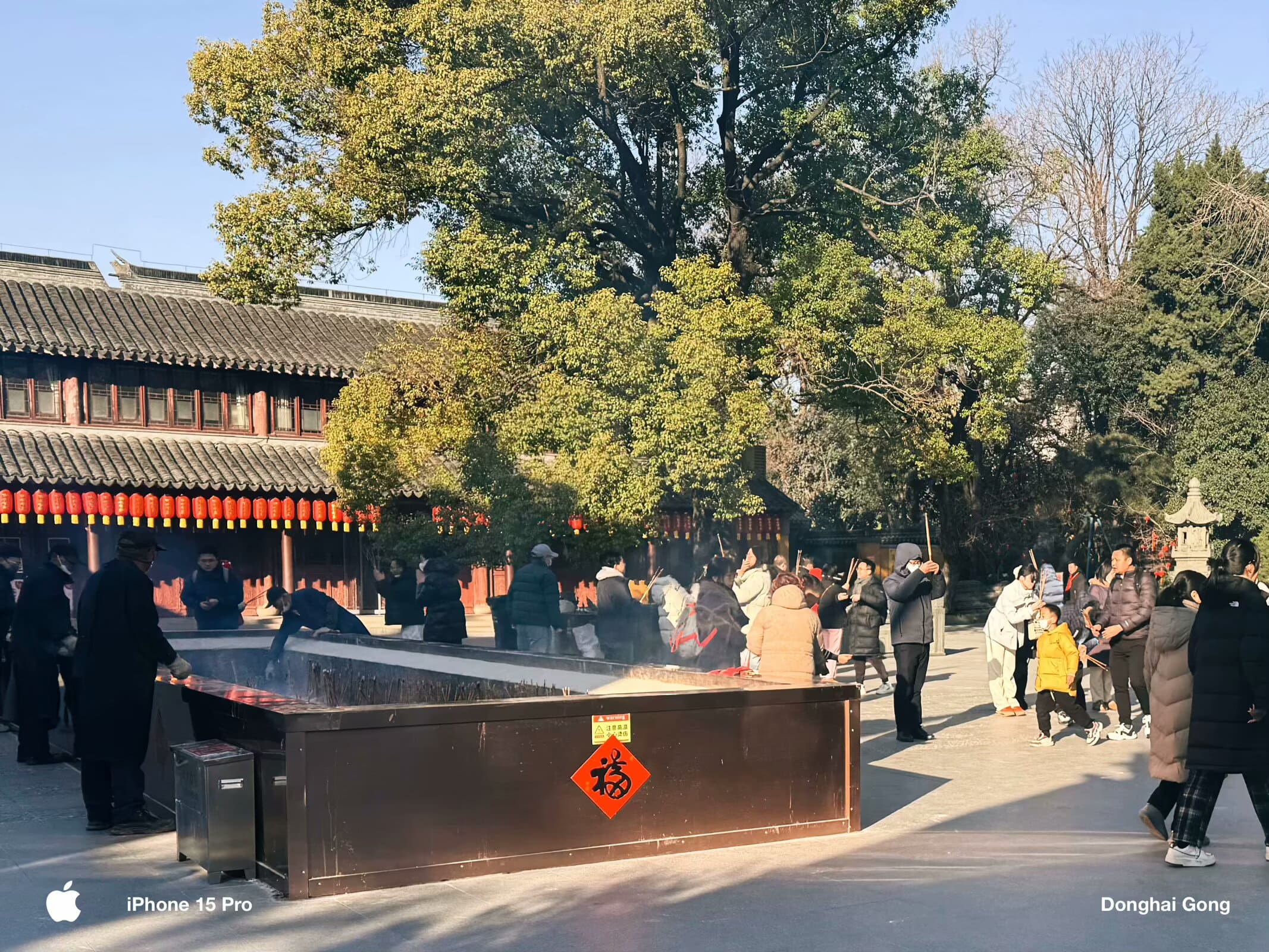
People were praying at the Maitreya Hall, dressed in matching vests and holding ritual items, suggesting they had come as part of an organized group.
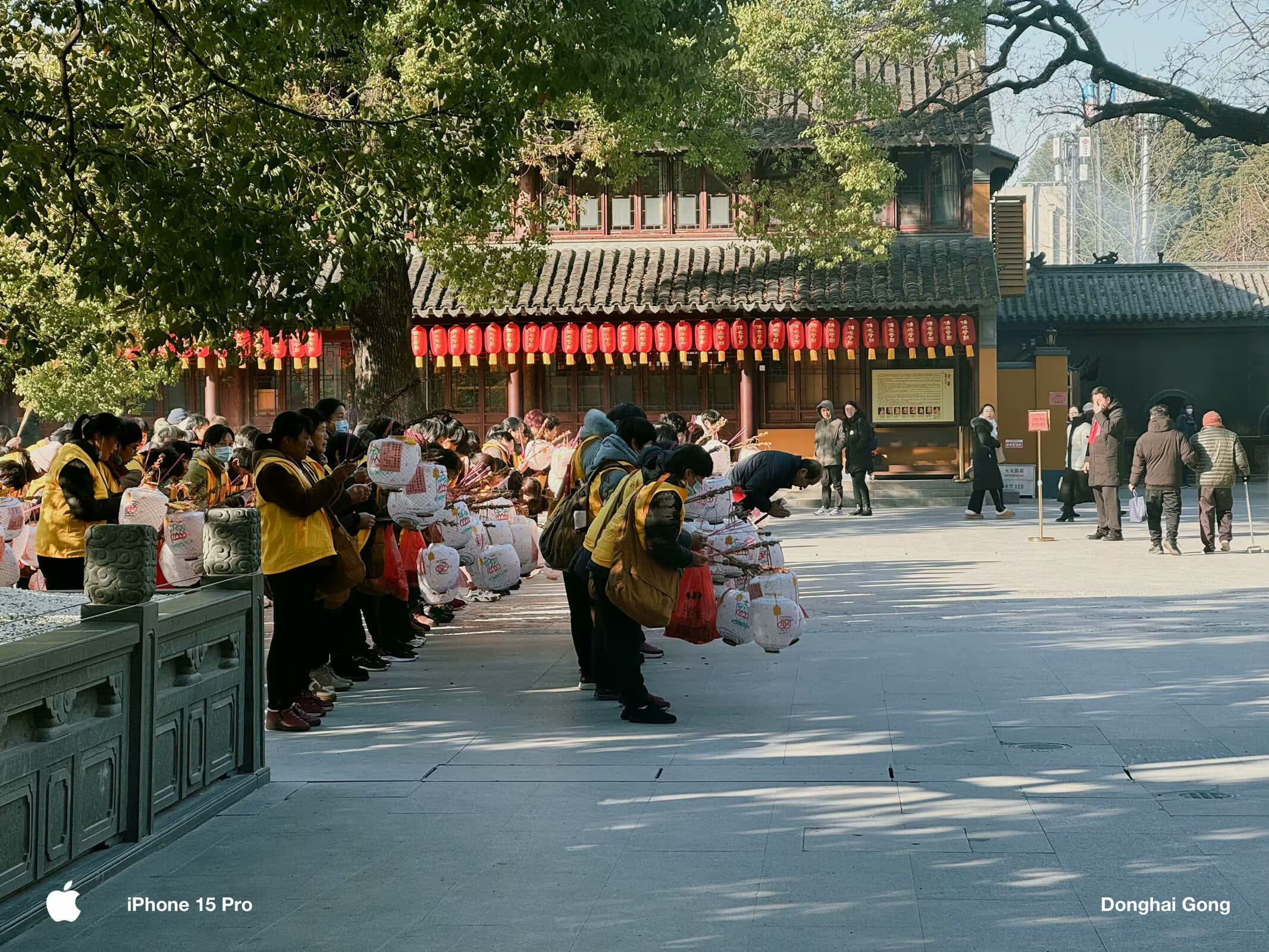
Praying at Maitreya Hall
After placing (or tossing) the incense into the burner, we lined up at the Dharma Merchandise Distribution Area nearby to purchase prayer bracelets.
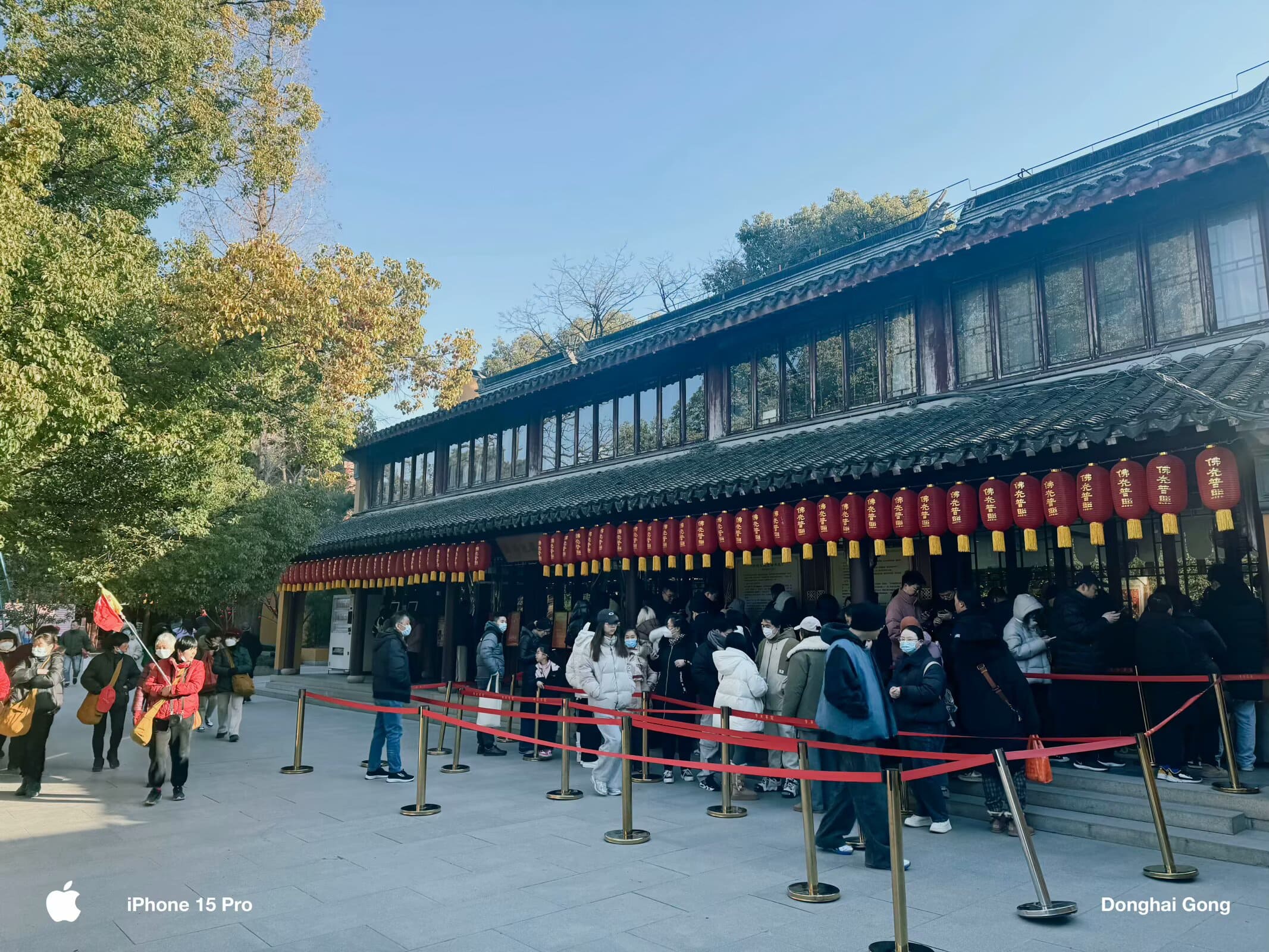
To the right of the incense burner
Here are the bracelets we purchased. The one on the left is a Tai Sui protection bracelet, while the one on the right is a Three-Harmony Zodiac bracelet. The Three-Harmony bracelet can be worn by any of the three zodiac signs associated with it. For example, in 2025, those facing conflicts with Tai Sui—such as Pig (冲太岁), Tiger (刑太岁), and Monkey (破太岁)—can all wear this type of bracelet.
Price details:
- Regular Tai Sui Bracelet – ¥168
- Three-Harmony Zodiac Bracelet – ¥198
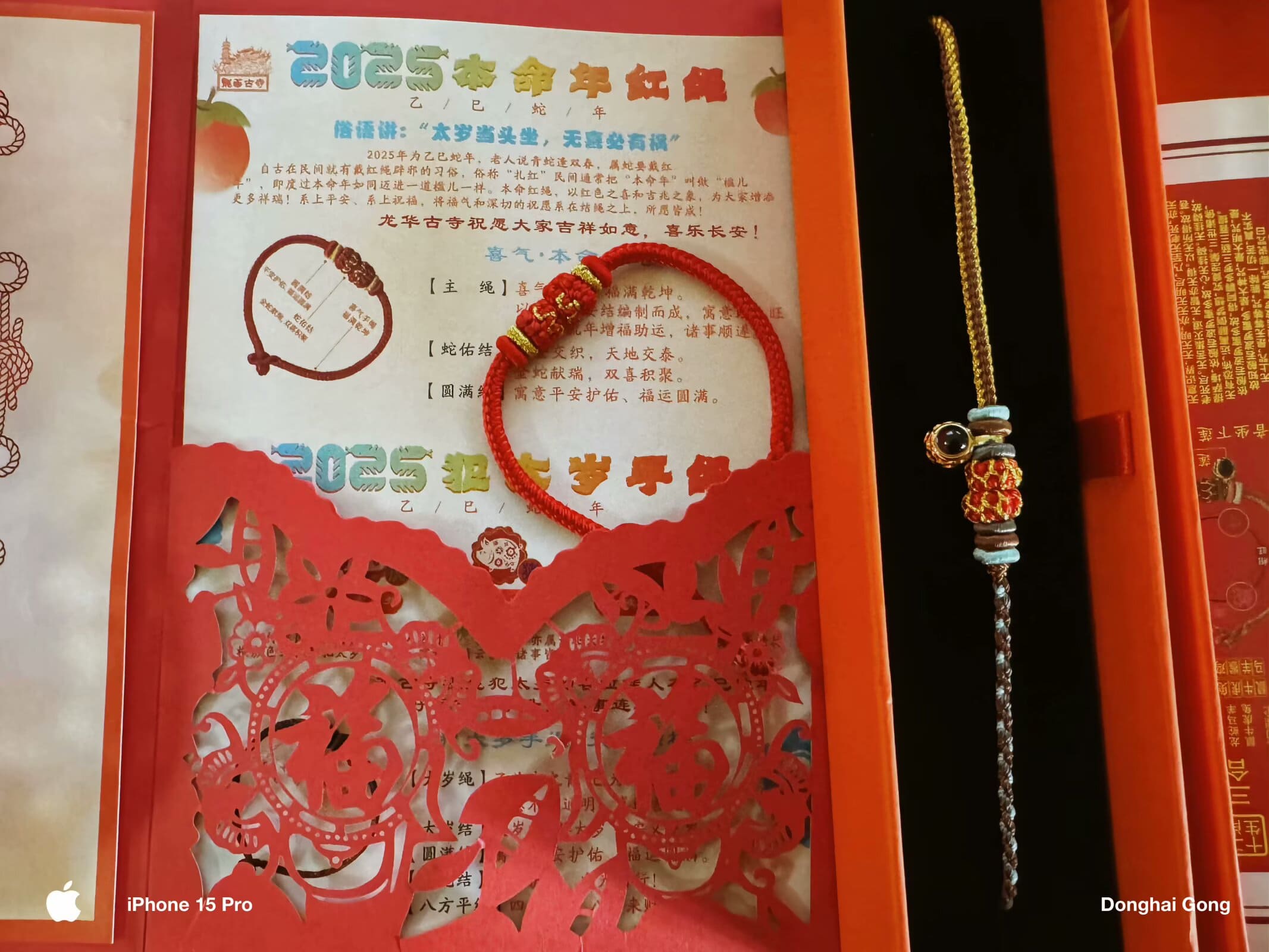
Left: Regular Tai Sui Bracelet; Right: Three-Harmony Zodiac Bracelet
Next to the Dharma Merchandise Distribution Area, there was a small gate leading to an enclosed space where a few deer were kept, along with a large bell.
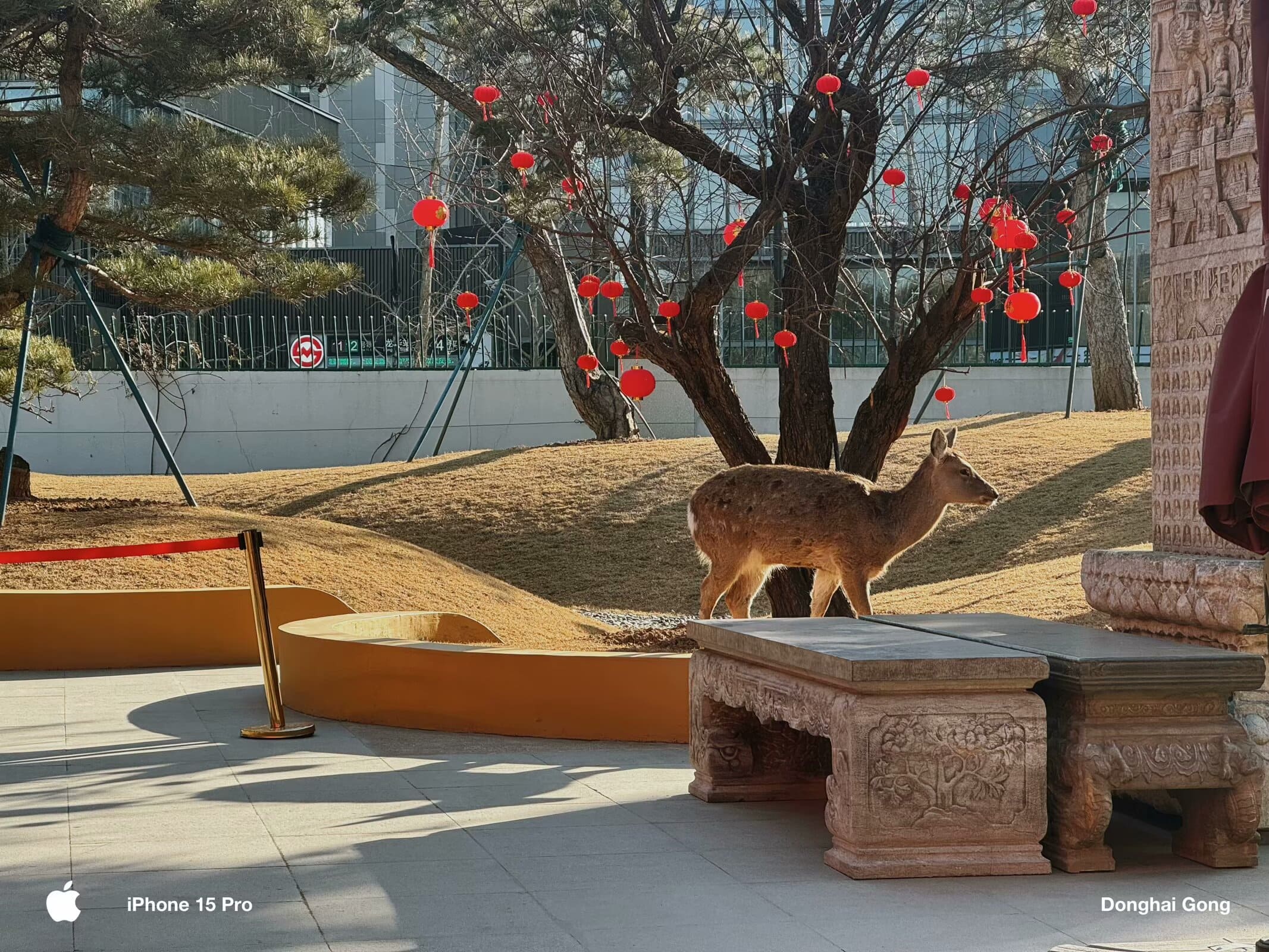
Deer
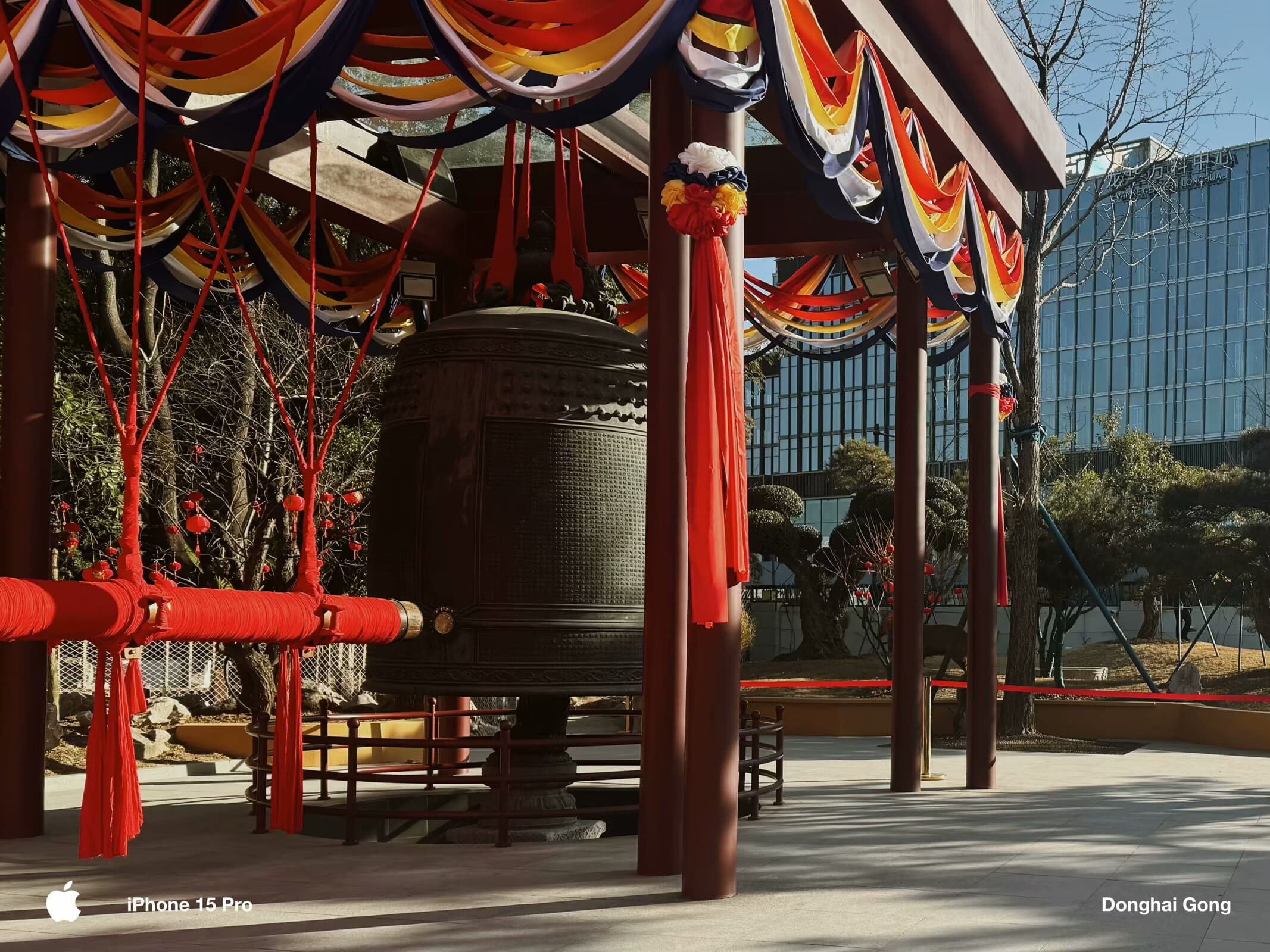
Large Bell
The temple environment was quite serene. Occasionally, I spotted cats lounging under trees, basking in the sunlight—it was a rather peaceful sight.
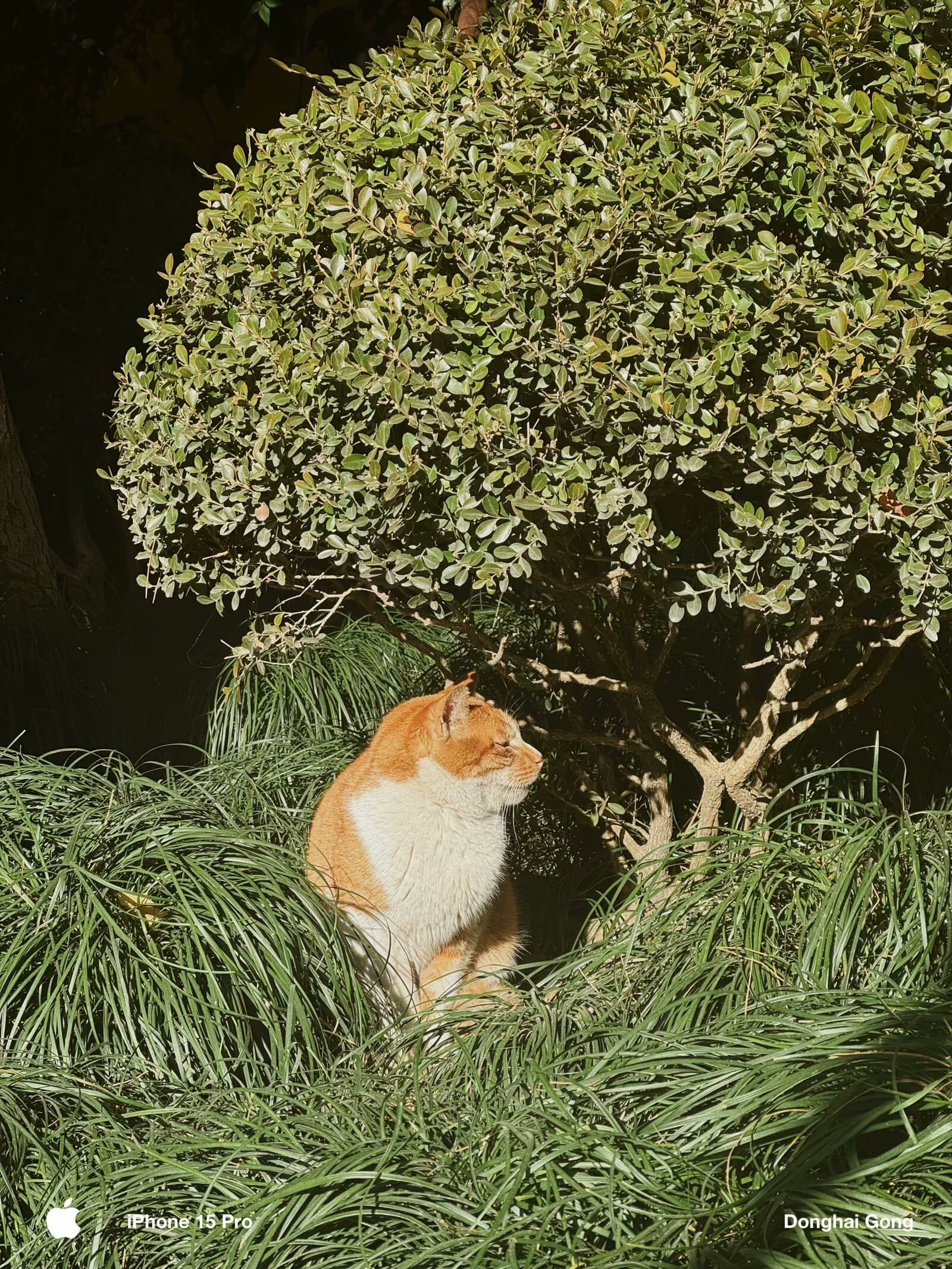
Relaxing under the tree
After strolling around the temple for a bit, we decided to have a bowl of Luohan noodles before heading back.
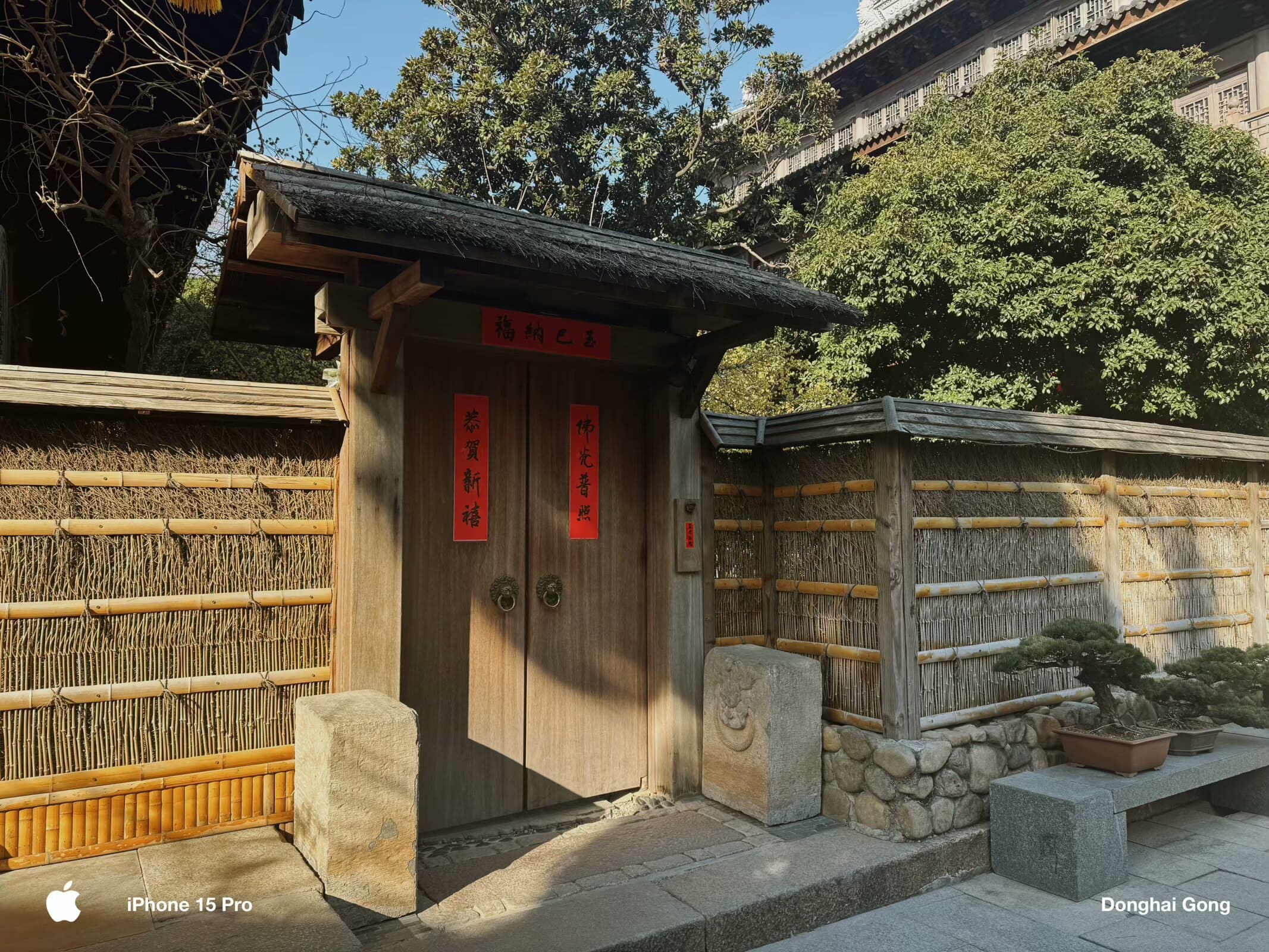
A courtyard across from the vegetarian dining hall—possibly living quarters
Walking about 200–300 meters from the Maitreya Hall, we arrived at the temple’s vegetarian dining hall, which was quite crowded.
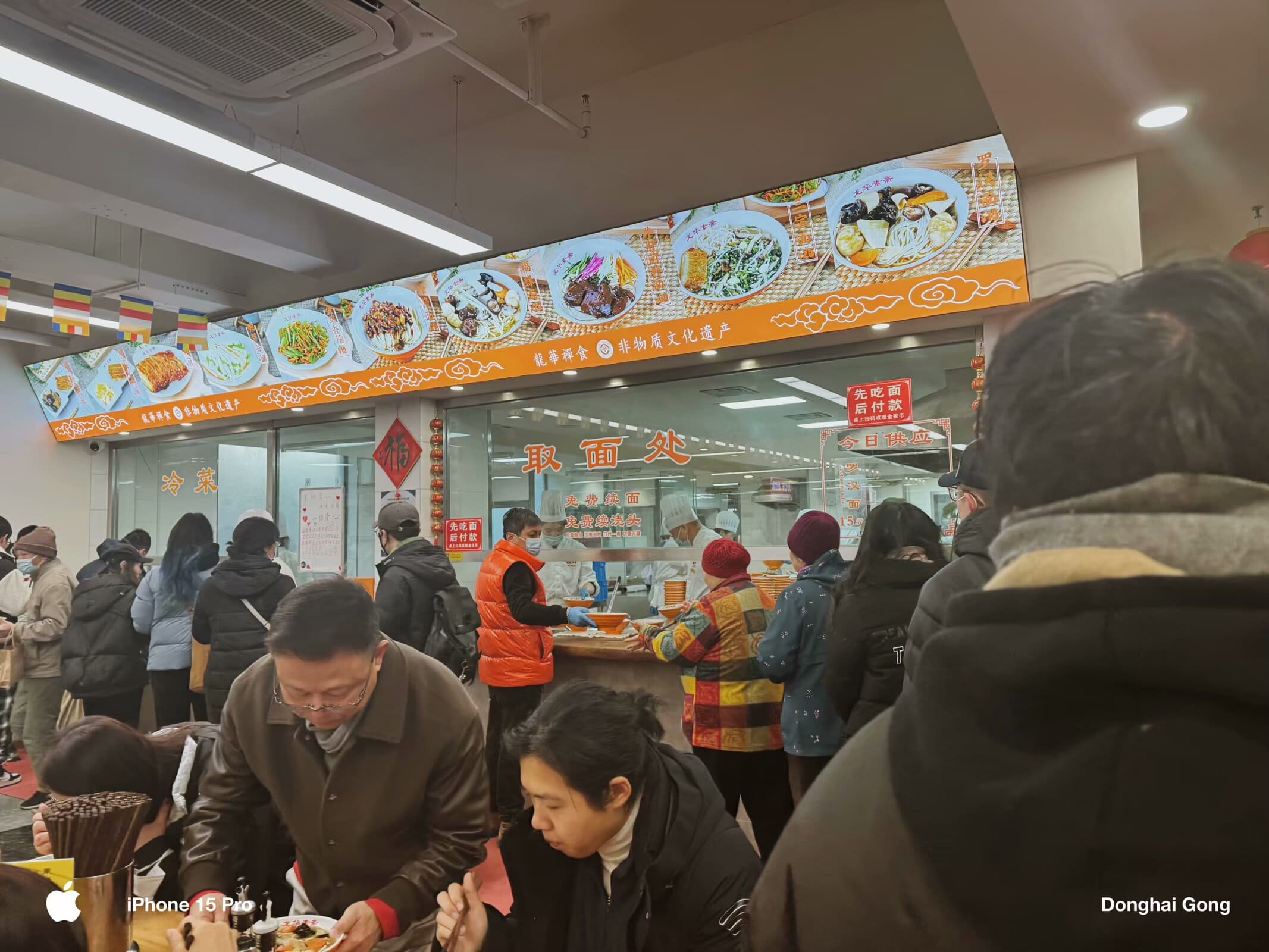
Lining up for noodles
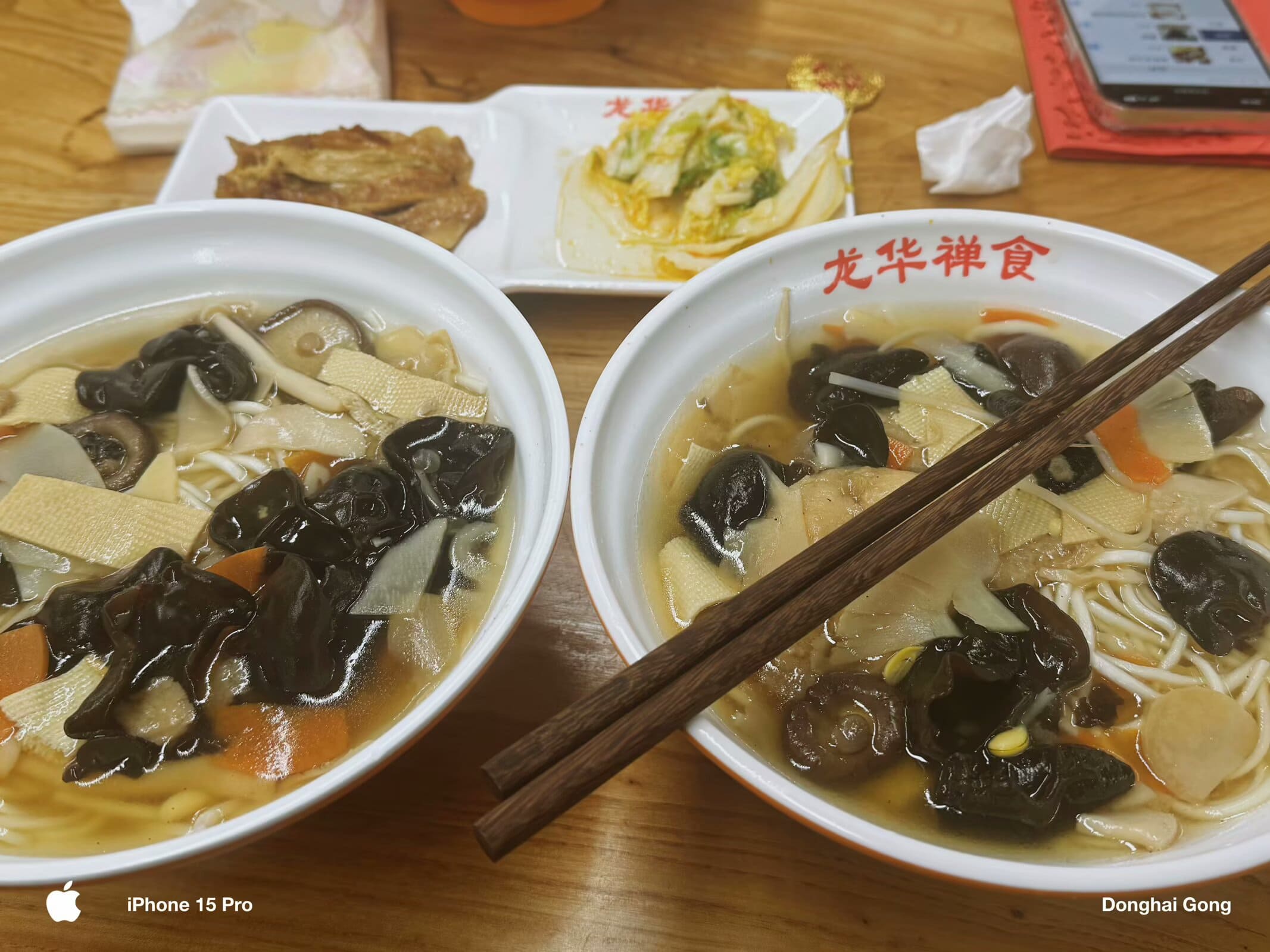
Luohan Noodles
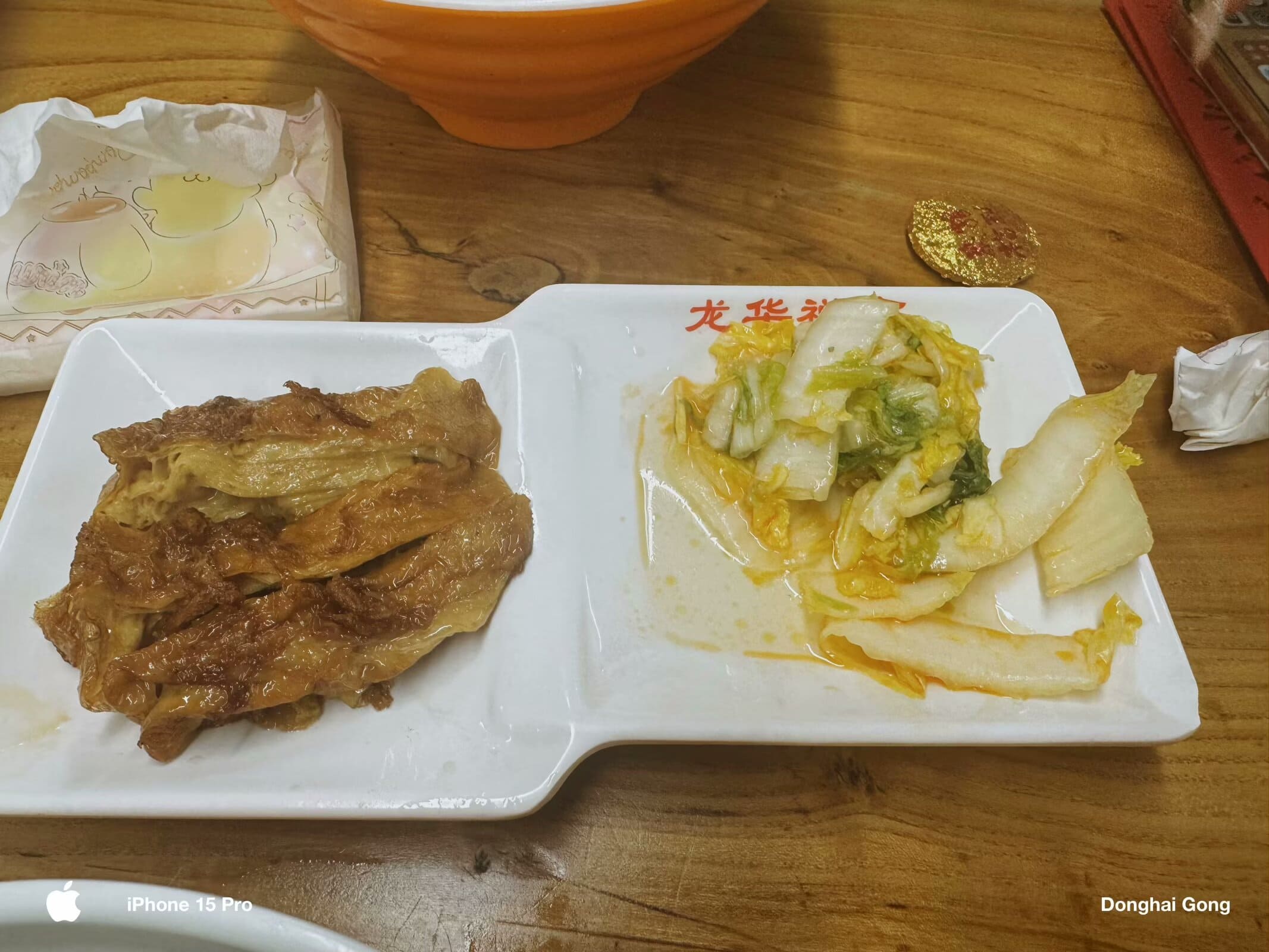
Vegetarian duck & sweet-and-sour cabbage salad
Why Worship Tai Sui?
Out of curiosity, I looked up what it means to worship Tai Sui.
Tai Sui refers to the Tai Sui God. In ancient times, the Ganzhi Calendar and 12 Earthly Branches were used for timekeeping. The 12 Earthly Branches correspond to the 12 Chinese zodiac animals, and when combined with the Heavenly Stems, they form a cycle of 60 Tai Sui deities.
What is Tai Sui?
According to tradition, each year is overseen by a celestial deity responsible for monitoring and managing earthly affairs. This overseeing position is known as Tai Sui, and there are 60 different Tai Sui deities, with a new one taking charge each year.
How Are the 60 Tai Sui Deities Determined?
The Heavenly Stems consist of 10 elements:
Jiǎ (甲), Yǐ (乙), Bǐng (丙), Dīng (丁), Wù (戊), Jǐ (己), Gēng (庚), Xīn (辛), Rén (壬), Guǐ (癸)
The Earthly Branches consist of 12 elements:
Zǐ (子), Chǒu (丑), Yín (寅), Mǎo (卯), Chén (辰), Sì (巳), Wǔ (午), Wèi (未), Shēn (申), Yǒu (酉), Xū (戌), Hài (亥)
Each year, a Heavenly Stem pairs with an Earthly Branch, forming a unique combination. These pairings cycle through 60 different combinations, starting from Jiǎzǐ (甲子) and ending at Guǐhài (癸亥).
Since each of these 60 combinations corresponds to a specific Tai Sui deity, we end up with 60 Tai Sui gods, each governing one year in a 60-year cycle.
Breaking It Down Simply
The number 60 comes from the least common multiple (LCM) of 10 (stems) and 12 (branches).
Another perspective:
- From the Heavenly Stems’ view: Each stem pairs with six branches → 10 × 6 = 60
- From the Earthly Branches’ view: Each branch pairs with five stems → 12 × 5 = 60
There’s also a traditional belief that the pairings follow the principle of “Yang with Yang, Yin with Yin.”
What is “Fan Tai Sui” (Offending Tai Sui)?
“Fan Tai Sui” refers to conflicts with the Tai Sui deity governing a particular year. When someone’s zodiac sign clashes with the year’s Tai Sui, it is believed to bring challenges, obstacles, or misfortune.
Below is a Zodiac Tai Sui Conflict Chart, outlining different types of conflicts:
| Zodiac Sign | Clash Tai Sui (冲太岁) | Punish Tai Sui (刑太岁) | Break Tai Sui (破太岁) | Harm Tai Sui (害太岁) |
|---|---|---|---|---|
| Rat (鼠) | Horse (马) | Rabbit (兔), Rooster (鸡) | Rooster (鸡) | Goat (羊) |
| Ox (牛) | Goat (羊) | Dragon (龙), Dog (狗) | Dragon (龙) | Horse (马) |
| Tiger (虎) | Monkey (猴) | Snake (蛇), Pig (猪) | Pig (猪) | Snake (蛇) |
| Rabbit (兔) | Rooster (鸡) | Rat (鼠), Horse (马) | Horse (马) | Dragon (龙) |
| Dragon (龙) | Dog (狗) | Ox (牛), Goat (羊) | Ox (牛) | Rabbit (兔) |
| Snake (蛇) | Pig (猪) | Tiger (虎), Monkey (猴) | Monkey (猴) | Tiger (虎) |
| Horse (马) | Rat (鼠) | Rabbit (兔), Rooster (鸡) | Rabbit (兔) | Ox (牛) |
| Goat (羊) | Ox (牛) | Dragon (龙), Dog (狗) | Dog (狗) | Rat (鼠) |
| Monkey (猴) | Tiger (虎) | Snake (蛇), Pig (猪) | Snake (蛇) | Pig (猪) |
| Rooster (鸡) | Rabbit (兔) | Rat (鼠), Horse (马) | Rat (鼠) | Dog (狗) |
| Dog (狗) | Dragon (龙) | Ox (牛), Goat (羊) | Goat (羊) | Rooster (鸡) |
| Pig (猪) | Snake (蛇) | Tiger (虎), Monkey (猴) | Tiger (虎) | Monkey (猴) |
Why Worship Tai Sui?
Simply put, the Tai Sui deities are believed to have great influence over human affairs. Worshiping them is thought to bring good fortune and help avoid misfortune, a belief deeply rooted in China’s ancient cosmology and mysticism.
Final Thoughts
I once came across an interesting question:
Q: “With modern advancements in science and technology, why do people still believe in religion?”
A: “If you don’t believe in a higher power, where do you draw your spiritual strength from?”
Thank you for your patience in reading! Come pick an emoji or leave a comment!